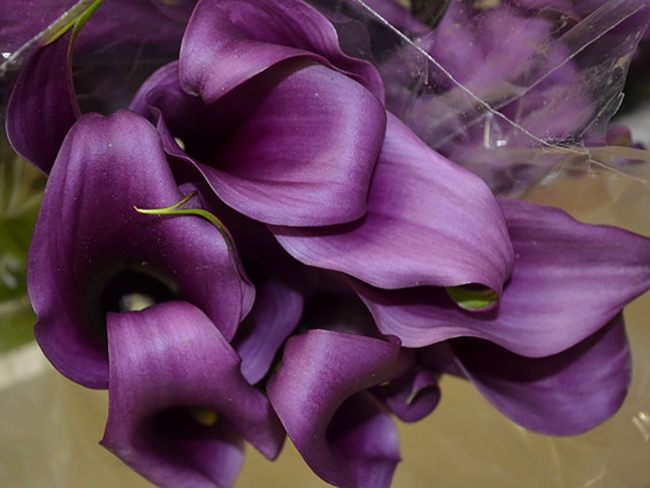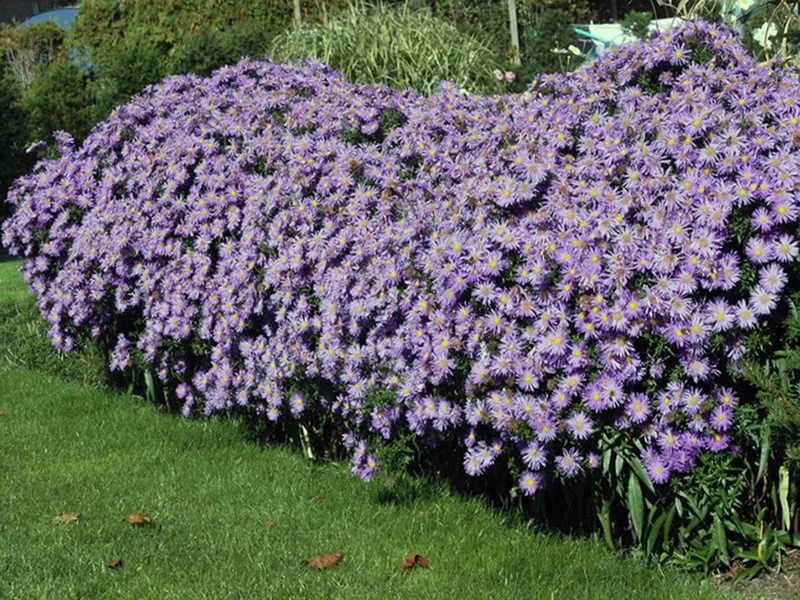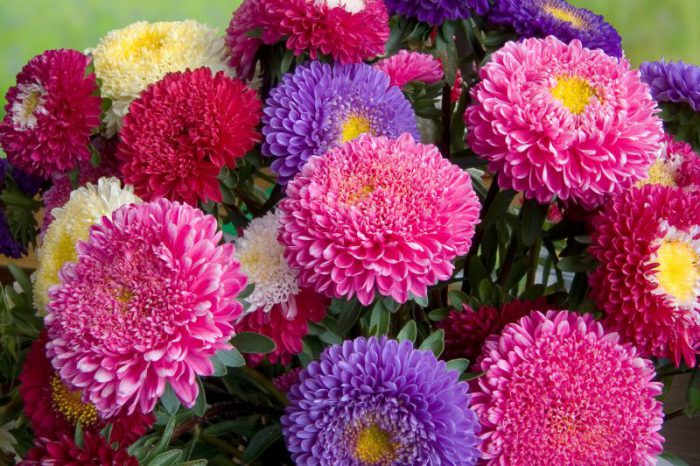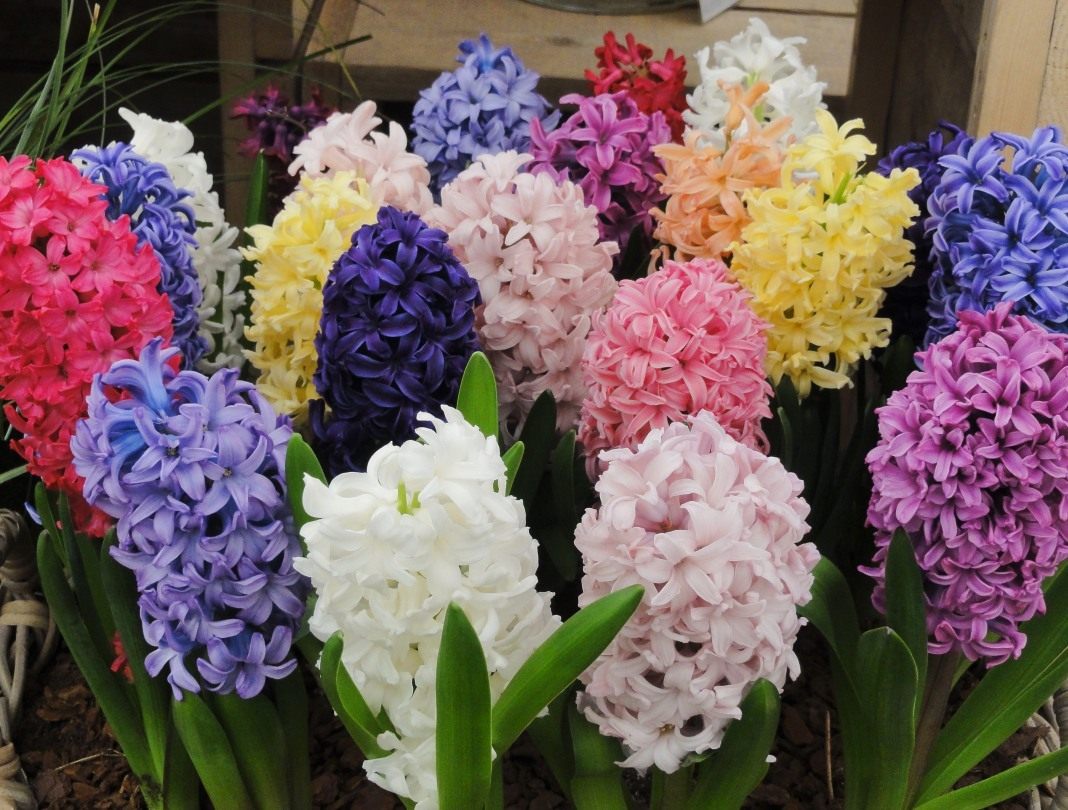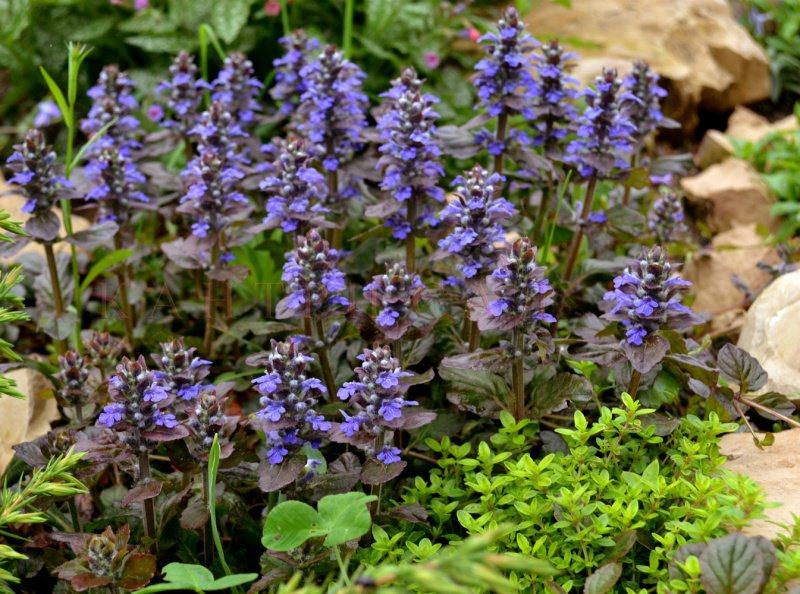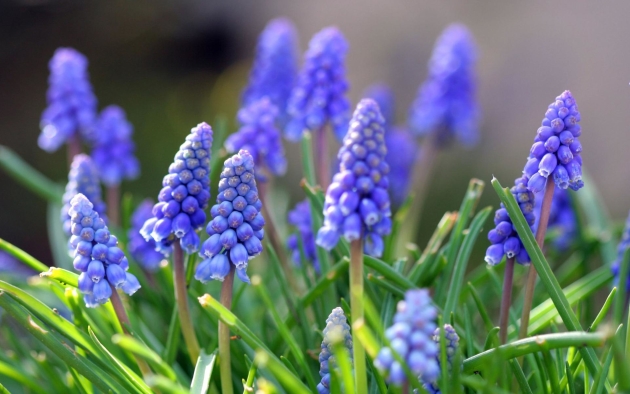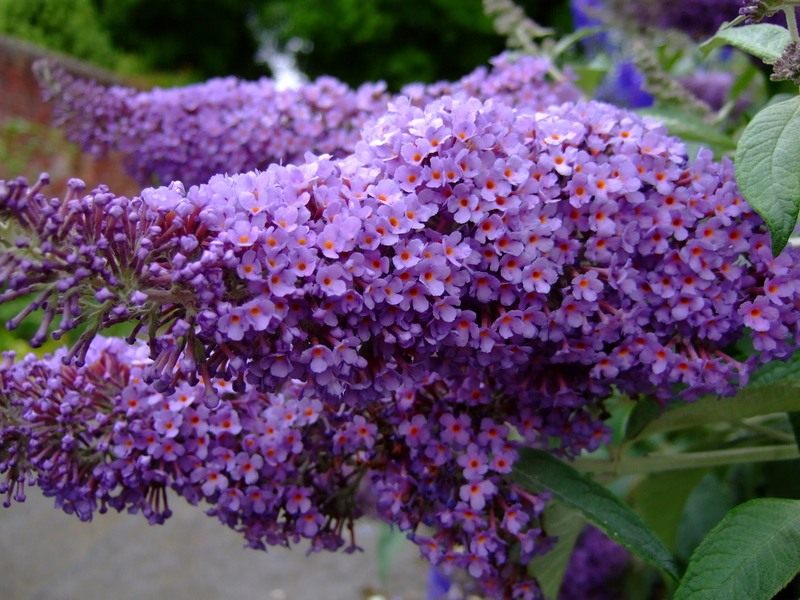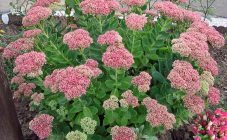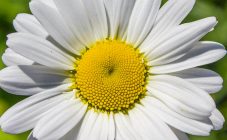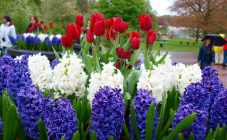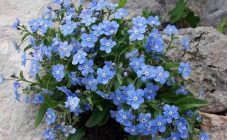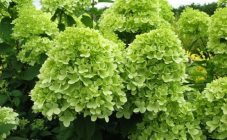Content:
European countries are in a fever with purple tones in flowers. The magic charm of color is due to the combination of opposite energies: restraint of blue and assertiveness of red. To match the fashion in landscape design, the dacha is populated with purple plants.
Description of purple perennial crops
Purple flowers have 190 tones, so it is not difficult to choose candidates for home and garden decor. Among indoor plants, they prefer the beautiful fuchsia, violet, as well as sour cherry, which is popularly called the clover of happiness. Violet scent and color have many followers.
Striking with violet colors perennials in the garden:
- Italian ox and gentian;
- hydrangea and arizema;
- aconite and callistephus;
- geranium and pulmonaria.
Psychologists are convinced that each person has their own reaction to the purple hue. The color of the flower buds symbolizes well-being, spiritual wealth, kindness. Birthday is a reason to give your best friend a home flower with purple buds.
Some gardeners believe that purple reflects age and wisdom that comes over time. Purple-flowered petunias have a more intense smell than other varieties. The luxury and depth of double or simple tubular buds are achieved thanks to the floral tone.
Besides serenity, among the meanings of purple cultures are sadness and longing for the past. Purple flowers are appropriate for romantic natures who dream of the future and the new. Girls who are depressed are not advised to grow such flowers.
For a delicate garden, a combination of purple perennials, coupled with annuals, fits. The neighborhood with orange or yellow crops gives the flower garden cheerfulness.
Plantings in a group of white and purple irises look beautiful. Callas and gladioli are attractive in this arrangement.
To embellish the flower bed with dark shades, purple crops with red and pink flowers are planted. Soloing purple buds against the background of a ground cover purslane or another culture will emphasize the originality of the site.
TOP 10 purple perennials
Plants are used for cutting into bouquets, for decorating buildings and decorating a charming plan. Dwarf and tall varieties with numerous buds are grown. Summer residents are interested in what the best purple flowers for the garden are called.
Alissum
Cultivated as an annual and biennial. The growth of a low-growing bush ranges from 20 to 40 cm. Alyssum has fragrant flowers and a bright color.
Features of agricultural technology
The light-loving plant loves light fertile soil. At the initial stage of development, a perennial needs moderate watering and enhanced nutrition. Alyssum, which belongs to the Cabbage family, is affected by the cruciferous flea.
They fight parasites by spraying with garlic tincture, wormwood decoction, pollination with tobacco.
If the plants are very sick, chemical preparations are used:
- Aktar;
- Fitoverm;
- Actellic.
Asters
The flower dominates the garden in autumn. The favorite of the autumn site is characterized by intense flowering before the onset of frost.
The color scheme is distinguished by a variety of tones: yellow-violet, snow-white, lilac, bright pink. Novobelgian aster is a valuable melliferous plant, on the golden mean of which bees flock during flowering.
Features of agricultural technology
When asters are planted, you need:
- half-shaded or sunlit flower bed;
- lightweight breathable soil;
- introduction of organic matter and mineral dressings;
- moderate watering;
- transplanting by dividing the bush every 5 years.
Colchicum
Perennial resembles a crocus. The purple flower has a name - colchicum. In the common people it is called an autumn or autumn crocus. The differences lie in the size of the flowers and the smell. One bulb forms up to four flowers.
The flowering period is three weeks. Then the pollinated flowers immediately dry up, winter well under the snow.
They planted croplands in a rock garden. Flower beds with constant flowering are suitable, as well as ordinary flower beds.
Features of agricultural technology
Colchicum grows in sun and shade.
However, you will need:
- control of soil moisture level;
- moderate watering during the heat;
- weeding and removal of weeds;
- pruning dried leaves in June and at the end of flowering.
Hyacinths
Admire with beauty and richness of colors. The elegant purple flower is mentioned in legends. One of them says that a young man named Hyacinth, the favorite of the Greek god Apollo, was wounded during a competition. In places where transparent drops of blood flowed down, wildflowers appeared, which were named after the young man.
Perennials are excellently cultivated in the open field and at home.
Features of agricultural technology
Spring primroses are susceptible to feeding. Dry fertilizer is applied after the formation of the first shoots, while the soil is also loosened for the first time.
The next time the flowers are fed at the budding stage under the root. Then the liquid feed is applied after flowering.
Before rooting the bulbs, the ground is not allowed to dry out. Hyacinth is watered periodically, especially during drought.
Creeping tenacious
A distinctive feature of a ground cover is its ability to survive. It occurs naturally in meadows and forests.
The following varieties are popular among summer residents:
- Multicolor with catchy purple foliage and splashes of scarlet, yellow or orange;
- Tenacious Laxmanas with elongated grayish leaves;
- Geneva tenacious with flowers of white, bluish or pink color.
Features of agricultural technology
The tenacious is resistant to adverse weather effects. The plant is not exposed to attacks of pests and phyto-diseases. The tenacious bloom with a minimum of sunlight. Prefers loose types of soil with the addition of sand, peat or turf.
Clematis
In another way, the vine, or clematis, is a herbaceous perennial plant from the Buttercup family. It grows in temperate climates and subtropics. There are up to 300 species.
Features of agricultural technology
Heat-loving clematis likes loams and sandstones without close occurrence of gunt waters. Plants are planted at 2 m intervals.
Liana care consists in watering, feeding, mulching the ground under the bushes: clematis does not tolerate overheating of the root system. Shelter is needed in winter.
Muscari
The undemanding plant has become famous for its color and smell, which is similar to musk.
Features of agricultural technology
A plant with a 25 cm leg likes abundant watering and sunlight. Grows in partial shade. Reproduction of individual varieties of a small culture occurs by self-sowing.
Phlox
Inhabitants of decorative flower beds take root and grow even on heavy soil. A valuable addition to planting holes of coarse sand.
Features of agricultural technology
To make phlox happy with balls of bright colors, planting is carried out in an open, sunny and protected from the winds flower bed. The root collar of the plant is deepened by 2-3 cm. Sandstones need an admixture of clay.
Lilac
Planting a decorative culture will ennoble the garden and city streets. Lilac (in Hebrew - lilas, in Persia - a fox's tail, in Russia - chenille) pleases summer residents with lilac flowers and an amazing aroma from mid-May. The lilac variety determines the color of the flowers: from pink-purple to white. In Russia, 3 species grow, in Eurasia - 30.
Features of agricultural technology
For planting bushes, choose a fertile, drained soil. Crops are planted in steps of several meters, watered and mulched. In the first years after planting, no fertilizer is applied under the bushes. Then they are fed with ammonium nitrate and urea. Don't forget to prune the plant.
Buddlea
Refers to deciduous shrubs that reach 2-3 m in height and differ in long spike-shaped inflorescences.
Features of agricultural technology
Buddleya loves sunny surroundings. The water-loving culture prefers foliar spraying. The shrub blooms at the age of three. The peak of decorativeness falls in July and lasts until October, if wilted inflorescences are removed. Before flowering, they are fed with nitrogen and organic matter. In the flowering phase, fertilize with potassium and phosphorus. In winter, the culture needs protection.
Purple plants are endless. Nature is rich in purple color. In addition, the efforts of breeders are effective.
The perception of purple garden flowers allows you to find peace of mind and energize.
It is important for gardeners to avoid mistakes when choosing purple perennials.

